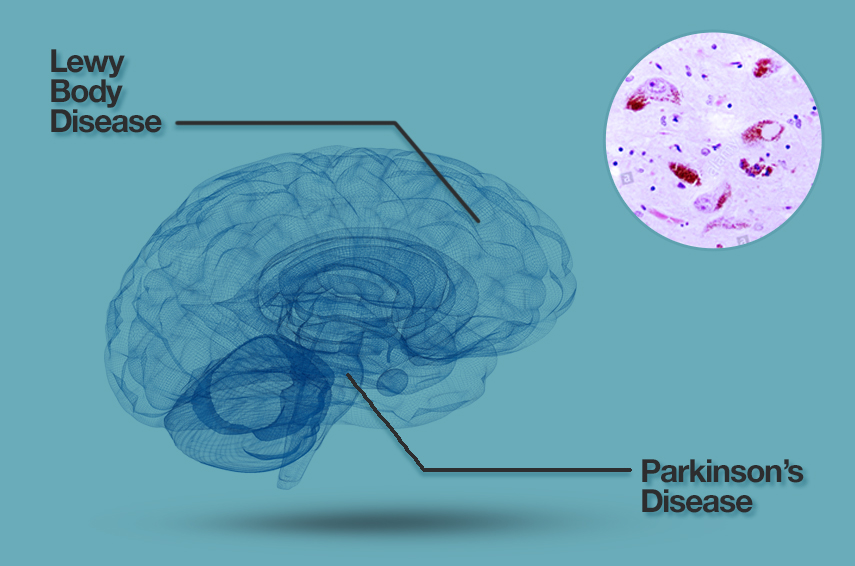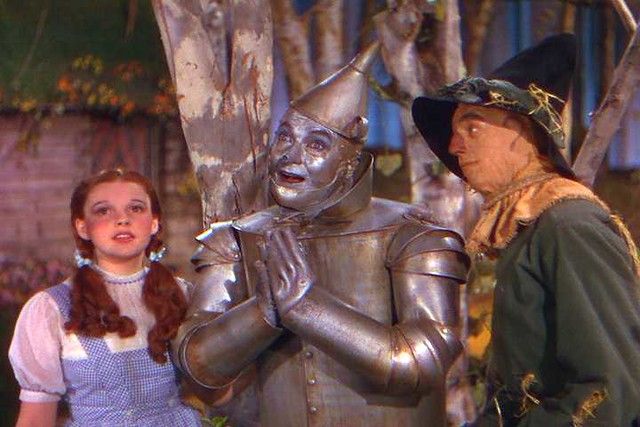
The announcement on August 11, 2014, that Robin Williams, the beloved actor and comedian who had delighted millions with his unparalleled wit and boundless energy, had died by suicide, sent a seismic shockwave across the globe. From his iconic roles in television’s “Mork & Mindy” to cinematic masterpieces like “Mrs. Doubtfire” and “Good Will Hunting,” Williams had cultivated an image of a man perpetually brimming with joy, a master alchemist of laughter who could transform any moment into pure gold. The stark reality of his demise, therefore, seemed to contradict everything the public understood about him, immediately prompting an agonizing search for answers that went far beyond the initial, simplistic explanations.
Early news reports, disseminated in the immediate aftermath of his death, quickly attributed his suicide to a battle with “severe depression.” While it was certainly true that Williams had grappled with mental health challenges throughout his life, this surface-level explanation failed to capture the profound complexity of his final months. The full, heartbreaking truth, as revealed by a post-mortem autopsy, unveiled a far more insidious and devastating adversary: an undiagnosed, advanced case of Lewy body dementia, or LBD, a progressive neurological disorder that would fundamentally redefine the narrative of his last struggles.
This in-depth exploration aims to peel back the layers of those challenging months, going beyond the headlines to reveal the nuanced reality of Robin Williams’ experience. Drawing exclusively from the candid accounts of his family, friends, and the medical findings that ultimately clarified his condition, we delve into the intricate tapestry of symptoms, struggles, and the profound, silent battle he waged. It is a story not just of a comedic genius, but of a man fighting an unseen enemy, desperately trying to understand what was happening to him, and in doing so, offering a poignant and crucial insight into the devastating impact of a little-understood disease.

1. **The Shocking Revelation of His Demise**
On August 11, 2014, the world awoke to the devastating news of Robin Williams’ death in his Paradise Cay, California home. His wife, Susan Schneider, last saw him alive around 10:30 p.m. the night before, exchanging their usual goodnights. She assumed he was still sleeping when she left the house for errands the following morning. It was his longtime assistant, Rebecca Erwin Spencer, and her husband, Dan, who became concerned when Williams had not emerged from his room by 11 a.m., leading to the harrowing discovery of his body.
Rebecca Spencer, after slipping a note under his door with no response, managed to jimmy the lock on his bedroom door. Inside, she found Robin Williams deceased, his body already “cold to the touch” with rigor mortis having set in, indicating he had been dead for approximately three to four hours. Marin County Sheriff’s Lt. Keith Boyd later confirmed to the media that Williams had died by suicide due to “asphyxia due to hanging,” found clothed and seated with a belt around his neck, one end wedged between a closet door and frame. Investigators also discovered superficial cuts on his left wrist and a pocket knife with dried blood, suggesting a prior attempt to cut himself.
While his publicist initially announced that Williams had been battling “severe depression,” leading many to believe this was the direct cause, his autopsy presented a more complex and ultimately more heartbreaking picture. The initial reports, though well-intentioned, could not capture the full, terrifying scope of what was truly afflicting the beloved actor, obscuring the unseen biological warfare unfolding within his brain. The shocking revelation of suicide was merely the tragic culmination of a much deeper, hidden struggle.
Read more about: The King’s Fading Echo: An In-Depth Look at Elvis Presley’s Tumultuous Final Year Before His Untimely Death
2. **The Mysterious Onset of Alarming Symptoms**
Well before his death, in the months leading up to August 2014, Robin Williams began to experience a troubling and bewildering array of physical and mental health issues. Itzkoff’s biography, “Robin,” details how these alarming symptoms first manifested around October 2013, including severe stomach cramps, vision problems, noticeable tremors, and a progressively stooped posture. These were not merely the typical signs of aging, but rather a perplexing constellation of ailments that deeply troubled Williams and those around him.
His close friends, observing these changes, couldn’t help but notice a stark difference in his demeanor and physical state. Billy Crystal, a longtime confidant, recalled Williams appearing “thin” and “frail,” often seeming “quiet” and uncharacteristically emotional and affectionate. Such observations painted a poignant picture of a man who was undeniably struggling, a man who, despite his outwardly jovial persona, was clearly battling an unseen and incomprehensible foe. These physical and emotional shifts were deeply unsettling, hinting at a profound internal disruption.
Williams himself was acutely aware that something was gravely amiss, describing his state to Billy Crystal as “a little crispy,” a tragic understatement for the profound disorientation he was experiencing. He often expressed confusion and distress, unable to pinpoint the source of his rapidly deteriorating health. This period marked the beginning of a relentless internal fight against symptoms that defied easy explanation, a silent torment that would escalate dramatically in the months that followed, leaving both him and his loved ones desperate for answers.
3. **A Career in Crisis and the Search for Stability**
The final year of Robin Williams’ life was not only marked by perplexing health issues but also by significant professional challenges that added immense pressure to his already fragile state. In September 2013, he returned to television with the CBS sitcom “The Crazy Ones,” a highly anticipated comeback vehicle after years away from a leading TV role. Despite the initial buzz, the show failed to resonate with audiences and was regrettably canceled after just one season in 2014, a deeply disheartening blow for an actor of his caliber.
This downturn in his career was not merely a professional disappointment; it carried personal and financial weight. Williams openly discussed the economic realities that prompted his return to television, acknowledging that a “steady job is appealing” given the “bills to pay.” He spoke candidly about his life having “downsized, in a good way,” even mentioning the sale of his ranch in Napa because he “just can’t afford it anymore,” highlighting a financial strain that influenced his career choices and added to his stress.
During this time, he was also working on films like “A Merry Friggin’ Christmas,” “The Angriest Man in Brooklyn,” and “Night at the Museum: Secret of the Tomb.” However, he reportedly struggled to secure more compelling movie offers and faced considerable pressure to deliver commercially successful projects. This period saw a beloved icon, known for his improvisational brilliance, grappling not only with a mysterious illness but also with the visible challenges of maintaining his professional standing in a demanding industry, exacerbating his internal turmoil.
Read more about: Beyond the Spotlight: Unveiling the Unseen Truths and Troubled Soul of Marilyn Monroe’s Private Life

4. **The Misdiagnosis That Masked the True Battle**
In May 2014, after months of enduring unexplained and increasingly disturbing symptoms, Robin Williams received a diagnosis that, at the time, seemed to offer some clarity: Parkinson’s disease. This news, while serious, initially brought a flicker of hope to his family, providing a tangible label for the inexplicable suffering he had been experiencing. Susan Schneider Williams later documented this period in her poignant paper, “The terrorist inside my husband’s brain,” reflecting on the relief of having an answer.
However, even with the Parkinson’s diagnosis, a persistent sense of unease lingered for Williams himself. Susan noted that her husband was “not buying it,” and his internal doubts led him to pose pointed questions to his neurologist, specifically asking if he was showing signs of Alzheimer’s, dementia, or schizophrenia. The neurologist’s responses were negative, yet Robin’s instincts, later tragically validated, suggested a deeper, more pervasive neurological issue than what Parkinson’s alone could explain.
Heartbreakingly, the Parkinson’s diagnosis proved to be incorrect. It was a misdiagnosis, one that, while bearing some symptomatic resemblance to his actual condition, ultimately masked the true, devastating illness that was systematically dismantling his mind and body. This crucial misdirection meant that the underlying cause of his profound distress remained undiscovered until it was too late, leaving him to battle an enemy whose true nature was unknown to him and his medical team.
Read more about: A Life of Laughs and Silent Battles: Revisiting Robin Williams’ Enduring Legacy and the Unseen Struggles He Faced

5. **Lewy Body Dementia: The Unseen Adversary**
It was only through his autopsy that the true, devastating nature of Robin Williams’ illness was definitively identified: Lewy body dementia (LBD). This condition, often misdiagnosed or overlooked, is a progressive type of dementia caused by the abnormal accumulation of proteins known as “Lewy bodies” throughout the brain and brainstem. These insidious deposits disrupt normal brain function, leading to a wide array of symptoms that profoundly impact movement, cognitive abilities, sleep patterns, and the nervous system.
LBD is notorious for its capacity to induce severe behavioral and mood changes, which tragically mirrored the profound shifts observed in Williams. The Lewy Body Dementia Association noted that in the final year of his life, Robin exhibited a “startling pattern of behavior,” including confusion, forgetfulness, paranoia, vivid hallucinations, overwhelming anxiety, and significant personality changes, all coupled with increasing difficulty with movement. Williams himself recognized that “something was wrong,” desperately struggling to comprehend the rapid decline he experienced.
At the time of his death, Robin Williams was in an advanced stage of LBD, a fact confirmed by the post-mortem findings that shocked even medical professionals. Susan Schneider Williams recounted the chilling revelation from doctors after the autopsy: “All 4 of the doctors I met with afterwards and who had reviewed his records indicated his was one of the worst pathologies they had seen.” He suffered a staggering “40% loss of dopamine neurons and almost no neurons were free of Lewy bodies throughout the entire brain and brainstem,” a grim testament to the overwhelming extent of the disease that had infiltrated every corner of his being. There is currently no cure for LBD, only treatments to manage its relentless progression.

6. **The Desperate Fight Against an Unknown Foe**
Despite the perplexing nature of his illness and the lack of a precise diagnosis for much of his final year, Robin Williams fought with immense courage and determination. He embarked on a relentless pursuit of solutions, attempting various measures to combat the escalating and bewildering symptoms that plagued him. As detailed by Vanity Fair, his efforts included engaging in extensive therapy, adhering to regular workout regimens, and even exploring self-hypnosis with the guidance of an expert at Stanford University, all in a desperate bid to regain control over his deteriorating mind and body.
However, the disease continued its relentless march. Susan Schneider Williams observed how the battle was increasingly taking its toll, particularly noting his restless nights. Robin would often spend hours in bed, fidgeting restlessly, tormented by an inability to find sleep. This pervasive insomnia and agitation became so severe that, for their own well-being, Robin and Susan eventually made the difficult decision to begin spending their nights in separate rooms, a poignant reflection of the private suffering he endured.
Friends, too, attempted to offer solace and distraction, though often unaware of the full scope of his internal struggle. Actor and comedian Eric Idle, for instance, tried to persuade Williams to come to London for one of his shows, hoping a guest appearance might lift his spirits. Williams, however, gently refused, with Idle later reflecting, “And all the time I was getting e-mails from him, and he was going downhill.” It was in this context of mounting, overwhelming symptoms and a sense of profound distress that Robin Williams made the decision to check himself into rehab, not necessarily for substance abuse, but as a “retreat” to focus on his overall well-being and sobriety, signaling a deep desire to overcome whatever was consuming him.”
Read more about: Beyond the Crown: 12 Truly Wild and Undignified Royal Deaths That Will Blow Your Mind
7. **A Deepening Isolation Amidst Personal Transitions**
Beyond the perplexing health woes and professional pressures, Robin Williams spent his final year navigating a profound sense of personal isolation, a condition exacerbated by shifting family dynamics and a new marital chapter. Having married Susan Schneider Williams in 2011, he was adjusting to a new life, one that, at times, required him to live separately from his wife while filming “The Crazy Ones” in Los Angeles. During this period, Williams often found himself alone in a rented apartment, a stark contrast to the lively, intellectually stimulating environment he had once known.
The “Vanity Fair” report, drawing from David Itzkoff’s biography “Robin,” illuminates this period of solitude. It suggests Williams wrestled with lingering guilt over his separation from his second wife, Marsha Garces, after 21 years of marriage, a personal reckoning that he sought ways to cope with. This new phase of his life, marked by Susan’s more independent nature and her infrequent accompaniment on his work travels, stood in stark relief to Marsha’s previous role, where she actively fostered social engagements and maintained their home, keeping Williams intellectually engaged.
His son, Zak Williams, later spoke with poignant regret about this lonely period. Observing his father’s increasing solitude while working on the show in Los Angeles, Zak expressed, “I’m kicking myself for not visiting him during that time,” adding, “Because I think that was a very lonely period for him. In retrospect, I feel like I should have been there, spending time with him. Because someone who needs support was not getting the support he needed.” It was a heartbreaking realization for Zak, underscoring the unseen emotional toll on his father.
This growing isolation, coupled with the internal battle against an unknown illness, created a devastating emotional vortex for Robin. The absence of constant, familiar companionship and the silent wrestling with his deteriorating mind left him increasingly vulnerable, transforming what should have been a period of creative pursuit into one of profound personal struggle and an escalating sense of being utterly alone. It added another layer of quiet suffering to a life already grappling with immense, inexplicable challenges.

8. **The Relentless Pursuit of Sobriety**
Robin Williams had always been remarkably transparent about his struggles with addiction, a candor that deeply resonated with many. In the final months of his life, even as Lewy body dementia silently ravaged his brain, his commitment to sobriety remained an unwavering personal battle. Just over a month before his death, Williams made the proactive decision to check himself into a rehabilitation facility in Minnesota, not for a relapse into active addiction, but as a “retreat” to safeguard his overall well-being and reinforce his long-term sobriety.
This decision underscored Williams’ profound understanding of addiction’s insidious nature. He had openly discussed his past battles, recounting to Diane Sawyer in 2006 his early 1980s addiction to cocaine and alcohol. He had famously halted his substance use after the tragic overdose death of his friend, John Belushi, a sobering moment that propelled him into nearly two decades of clean living. His journey, however, was not without its detours, a testament to the persistent pull of his past demons.
A significant relapse occurred in 2004, an experience he candidly shared in a 2013 interview with Parade. He recalled a seemingly innocuous moment: “One day I walked into a store and saw a little bottle of Jack Daniel’s. And then that voice — I call it the ‘lower power’ — goes, ‘Hey. Just a taste. Just one.’ I drank it, and there was that brief moment of ‘Oh, I’m okay!’ But it escalated so quickly.” The rapid descent highlighted addiction’s deceptive power, proving that even after years of sobriety, the threat never truly dissipates.
Williams’ powerful metaphor for addiction, “It waits. It lays in wait for the time when you think, ‘It’s fine now, I’m OK.’ Then, the next thing you know, it’s not OK. Then you realize, ‘Where am I? I didn’t realize I was in Cleveland,'” remains a chillingly accurate description of its deceptive grip. His final retreat to rehab was a testament to his lifelong vigilance against this foe, a valiant effort to maintain clarity and control amidst the neurological chaos that was already overwhelming his senses.
Read more about: 14 Hollywood Deaths That Changed Everything: Prepare to Be Amazed by Their Lasting Impact!

9. **The Heartbreaking Erosion of His Comedic Genius**
Perhaps one of the most agonizing aspects of Robin Williams’ final months was the cruel, relentless erosion of his legendary comedic abilities, the very essence of his public persona. As his Lewy body dementia progressed, the spontaneous brilliance that defined his performances began to falter, replaced by a profound struggle to recall lines, to find the words, and, most heartbreakingly, to access his innate humor. The stage, once his sanctuary of boundless energy, became a place of increasing difficulty.
Cheri Minns, his makeup artist on the set of “Night at the Museum: Secret of the Tomb,” bore witness to this agonizing decline, offering a profoundly intimate glimpse into his private torment. She recalled Williams “sobbing in my arms at the end of every day. It was horrible. Horrible,” expressing her own distress and sense of helplessness by stating, “I’m a makeup artist. I don’t have the capacity to deal with what’s happening to him.” These were not mere professional frustrations, but the cries of a man losing himself.
Minns, in a desperate attempt to reignite his spark, suggested he return to his roots, to the stand-up comedy that had launched his career. The suggestion, however, only elicited a deeper despair. Robin broke down, confessing to her, “I can’t, Cheri. I don’t know how anymore. I don’t know how to be funny.” This raw, emotional admission revealed the depth of his internal suffering, a creative genius confronting the horrifying reality that his most cherished gift was being systematically stripped away by an invisible enemy.
His wife, Susan Schneider Williams, later clarified the true nature of his battle, dispelling the widespread misconception that depression alone had claimed his life. In 2015, she asserted, “It was not depression that killed Robin,” explaining that “Depression was one of let’s call it 50 symptoms and it was a small one.” Her words underscored that the inability to perform, the confusion, and the emotional unraveling were not simply signs of sadness, but direct manifestations of a devastating neurological disease that was consuming his mind and spirit.

10. **The Escalation of Paranoia and Delusional Panic**
In his final months, Robin Williams was not merely battling physical symptoms and cognitive decline; he was ensnared in an escalating spiral of paranoia and panic, a terrifying aspect of Lewy body dementia that profoundly distorted his reality. His suffering extended beyond the observable tremors and memory lapses to include deep-seated anxiety, severe stomach pain, insomnia, trouble urinating, indigestion, and, most disturbingly, “delusional looping” and a pervasive sense of suspicion. This cocktail of symptoms turned his world into a waking nightmare.
The intensity of his internal torment became frighteningly apparent during the filming of “Night at the Museum: Secret of the Tomb” in April 2014, when he suffered a severe panic attack in Vancouver. Despite his profound distress, Williams, ever the performer, attempted to keep his struggles hidden, minimizing the extent of his pain to even his closest friends. Billy Crystal noted, “‘He wasn’t feeling well, but he didn’t let on to me all that was going on,'” recalling Williams describing himself as “a little crispy,” a tragic understatement for his profound internal disintegration.
Susan Schneider Williams, intimately observing his daily struggles, described a marked shift in his behavior. “Having been by my husband’s side for many years already, I knew his normal reactions when it came to fear and anxiety,” she wrote. “What would follow was markedly out of character for him. His fear and anxiety skyrocketed to a point that was alarming.” This unprecedented escalation, she later learned, is sometimes recognized as an early and devastating sign of Lewy body disease, amplifying the cruelty of his misdiagnosis.
The paranoia reached a critical, tragic peak as Williams faced the prospect of further neurological evaluation. Susan recounted her belief that he became “extremely paranoid about an upcoming visit to a neurocognitive testing facility.” In his terrified mind, he thought, “I’m going to get locked up and never come out.” This profound fear, this delusional conviction of impending confinement, ultimately became a pivotal, heartbreaking factor in his final, desperate act, just a week before that crucial appointment.
11. **The Poignant Last Hours and Final Words**
The last evening of Robin Williams’ life, August 10, 2014, seemed, to his wife Susan, to be a day of quiet improvement, offering a brief, deceptive reprieve from the relentless onslaught of his illness. As she prepared for bed, Williams entered their room a couple of times, exchanging their customary goodnights. His final words to her were a tender “Goodnight, my love,” a poignant echo of their shared affection. He returned once more with his iPad, appearing to have something to do, a small detail that Susan interpreted as a sign of his improving state. “And that was like, ‘I think he’s getting better.’ And then he said ‘goodnight, goodnight.’ That was the last.”
The following morning, August 11, Susan Schneider left the house for errands, assuming her husband was still peacefully sleeping in his separate bedroom, a practice they had adopted due to his severe insomnia. However, by 11 a.m., concern mounted when Williams had not emerged. His longtime assistant, Rebecca Erwin Spencer, and her husband, Dan, who were at the house, grew worried. Rebecca slipped a note under his door, but received no response, intensifying their apprehension.
In a harrowing turn, Rebecca Spencer, unable to get a response, made the difficult decision to jimmy the lock on his bedroom door. Inside, she discovered Robin Williams, tragically deceased. His body was already “cold to the touch” with rigor mortis having set in, grim indicators suggesting he had been dead for approximately three to four hours. It was a devastating revelation, marking the tragic end to a life consumed by an unseen torment.
Marin County Sheriff’s Lt. Keith Boyd later confirmed the official details to the media, stating that Williams died by suicide due to “asphyxia due to hanging.” He was found clothed, in a seated position, with a belt around his neck, one end wedged between a closet door and its frame. Investigators also discovered superficial cuts on his left wrist and a pocket knife with dried blood on it, suggesting a prior, desperate attempt at self-harm. These chilling details painted a stark picture of his final, tormented moments.
Read more about: The King’s Fading Echo: An In-Depth Look at Elvis Presley’s Tumultuous Final Year Before His Untimely Death

12. **An Enduring Legacy of Laughter and Love**
In the wake of Robin Williams’ death, the world grappled with an immense sense of loss, but through the profound grief, a powerful legacy of laughter, kindness, and love endured, cherished by his family, friends, and millions of fans. He left behind three beloved children — Zak, Zelda, and Cody Alan — each of whom shared heartfelt tributes to their father. Zak, in particular, captured the depth of their sorrow, stating, “‘I lost my father and a best friend and the world got a little grayer.’ He vowed to ‘carry his heart with me every day,’ urging others to remember Robin by embodying his gentle, kind, and generous spirit, and to ‘seek to bring joy to the world as he sought.'”
A private event at San Francisco’s Curran Theatre brought together hundreds of luminaries from Hollywood and beyond, including Bette Midler, Ben Stiller, George Lucas, Sarah Michelle Gellar, and Jeff Bridges, to honor his extraordinary life. Moving eulogies were delivered by his close friend Billy Crystal, Whoopi Goldberg, Eric Idle, and his wife, Susan, alongside his children, painting a vivid portrait of a man who touched countless lives. His ashes were later scattered over the San Francisco Bay, a final, serene resting place near the home he loved.
In the years that followed, his children have tirelessly worked to preserve his memory and advocate for mental health awareness. On what would have been his 73rd birthday, Zak Williams shared a powerful tribute on X, reflecting on how his father “brought all the hope and joy to the world,” and how countless individuals shared stories of how Robin “helped them through a dark time.” He continued this tradition on his father’s 74th posthumous birthday, candidly discussing the nature of grief and emphasizing Robin’s legacy of kindness, compassion, and the pursuit of light.
Read more about: Remembering the Legends: 14 Famous Faces We Lost in 2023 Whose Legacies Will Never Fade
Even a decade after his passing, the impact of Robin Williams resonates deeply, inspiring new initiatives to celebrate his unique genius. Matthew Lawrence, his co-star, has even proposed using advancements in artificial intelligence to revive Robin’s unmistakable voice for a special project, with the family’s blessing. It is a testament to the indelible mark he left that, despite the tragic circumstances of his final months, the laughter he shared with the world, the boundless joy he ignited in others, and the enduring love for his spirit continue to live on, brighter than ever.








